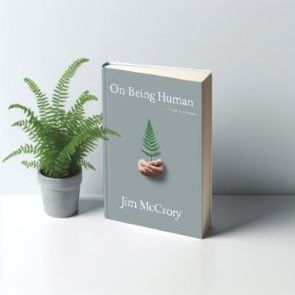
Freedom Come-All-Ye
It was a bright afternoon in Leith Harbour when I boarded the Royal Yacht Britannia—a polished remnant of empire now anchored in peaceful retirement. Tourists hovered politely around its grandeur, reading plaques in hushed tones. But it wasn’t the velvet-lined state rooms or the glint of naval brass that stayed with me. It was a conversation—brief, serendipitous—that unlocked something buried and beautiful.
A young woman stood nearby, looking out across the Firth of Forth as gulls wheeled in the blue. We struck up a gentle conversation. It came out, quite naturally, that I’d always associated Leith not just with shipyards and sea-salt air, but with Dick Gaughan—the defiant voice of working-class Scotland. I asked, half-hopefully, whether he was still around these parts. She smiled, a little surprised.
“I went to school with his daughter,” she said.
There it was. A tether across time. My memory reeled back to a gift I was once given as a young man: a cassette, handed to me casually by someone who must have known I needed it. On it was Dick Gaughan—live. Raw. Honest. Fiercely tender. One song on that tape stilled me. I remember it not just in sound but in sensation—like a cold wind down the spine. That song was Freedom Come-All-Ye.
A Song Like a Prayer
It wasn't just music. It was a poem set alight. Hamish Henderson’s words poured through Gaughan’s voice like prophecy, like lament. Though written in Scots, its heart spoke clearly, no translation needed. You knew, even as a boy, that this was not entertainment. This was witness.
“Nae mair will our bonnie callants
Merch tae war when our braggarts crousely craw...”
The song offered something I couldn’t name at the time—resistance, maybe, or release. A kind of belonging that had nothing to do with nationhood and everything to do with human dignity. Here was an anthem for the ordinary: the dockers, the dreamers, the weans of pithead and clachan. It did what only the best folk songs do—it lifted the voiceless to the mountaintop and let them sing down to the valley.
Interpreting Henderson's Vision
Hamish Henderson was a soldier and a scholar, but more than that, he was a listener. He believed in the people's tongue—in preserving not just stories but the spirit behind them. Freedom Come-All-Ye is less a protest song than a spiritual vision. A “come-all-ye” was traditionally an invitation to gather and sing; Henderson turned it into a gathering for peace and hope.
The opening stanza starts with a roch wind—a rough wind blowing through Scotland. Not just weather, but change. The “great glen o’ the warld” hints at a Scotland connected to broader struggles, rejecting imperial violence. The song urges the warmongers and profiteers— “a’ they rogues that gang gallus, fresh and gay”—to take their fun elsewhere. Their time is done.
And that iconic chorus:
“Nae mair will our bonnie callants
Merch tae war...
Nor wee weans frae pitheid and clachan
Mourn the ships sailin' doon the Broomielaw.”
It’s both lament and prophecy. A vow that no more young men will die for pride, and no more mothers will weep at the docks. The Broomielaw becomes a place not of parting, but of peace.
There’s a verse that speaks of “black laddies frae yont Nyanga” rising in strength—Henderson’s solidarity stretched beyond borders, beyond race and nation. It’s not a Scottish song. It’s a human song, wearing the kilt but carrying a global heart.
I’m sure Henderson will one day value God’s Kingdom that will fulfil that freedom.
Image generated with the assistance of Microsoft Copilot